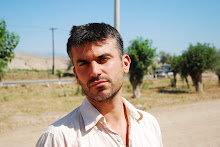Fort at Vose - All you need is a well trained dog
Why is it, on the morning of a big trip something annoying happens, with the odds stacked heavily on a NIVA related issue. An oil, water and general check to see if all the parts appeared to be linked in the engine becomes a particularly frustrating process if the lever for the bonnet breaks. Whilst my intrepid fellow travellers packed, I drove aimlessly around in the hope that a rut on the road will miraculously fix the problem, or that I will stumble across a place that will have all the right parts and right skills to fix it in ten minutes. In desperation I swung into a tyre inflation establishment to ask for general guidance on how I would remove the spare tyre in the event of a puncture from its nest in the engine, and like the Fonz he tapped the latch, metaphorically snapped his fingers and all was good in the world. If only there was some upbeat sixties music.
So, The Pamirs, it is situated at the far East of Tajikistan, and accessed from Dushanbe by a $80 flight or 14hrs (minimum but usually significantly more ) in a beat up 4x4 taxi with seven other trance like zombies. There are actually two routes, one to the North through the Rasht Valley which is prone to mudslides and rock falls, or one to the South which is prone to mudslides and rock falls, but is another 110km, or if you take the detour on the detour possibly 200km. However, fate had already decided, the Northern route was impassable due to the disappearance of a bridge, so two kiwi’s, two tents, and two weeks ahead we raced off discussing a sweep stake on the number of pending police checks.
Although Pamir’s is the goal there are a few and varied places to snap a photo along the way.
(2hrs) Nurek Lake View Point - a large expanse of turquoise water that feeds the electricity turbines of the country.
(3hrs) Dangara Theme Park – overlooked by an impressive presidential tea house this brightly painted theme park was built to amuse the Afghan President during the ‘Id’ (post Ramadan) celebration last year. As deserted and eerie as the hotel in the ‘Shining’, it serves chips and fluorescent pear juice.
(3.5hrs) Vose Fort – Albeit, work in progress, this silk route trading fort is being beautifully restored by three men and a dog.
(4hrs) – Vose – This dusty market town boasts an imposing white stone god-like statue of the writer Vose, and slightly smaller shiny silver statue of Lenin attempting the moonwalk.
(4.5) – Kulyob – A provincial city with a bustling market, a spacious war memorial and the rather understated Hotel Khatlon. Kulyob sits in a blistering hot flood plain and serves as the gateway to the surrounding mountains.
(8hrs) – Shurobod Pass – Although not the highest pass in the country, the rocky road and steep mountain gorge serve as an excellent gateway to the Panj river and views of the troubled country of Afghanistan.
The rest of the journey provides no specific tourist spots other than the odd abandoned pile of rocks that claim to be a fort. As the light faded we pitched camp in the front room of bemused family that we imposed ourselves upon, and entertained the three children with New Zealand’s finest vocals.
The next day we bounced along admiring the precarious footpath that clung to the rock face on the Afghan side of the Panj River. The ever ascending and descending track was held together by loose stones and twigs, scaling up vertical rock faces, sliding down scree slopes and dipping into the murky torrent of snow melt. That night we pulled into at a motel in Derashan, just as the wedding party dispersed. On declining the party’s leftovers, the enthusiastic owner, provided us with a gas stove, pots, and pans, and seemed bewildered at our choice of packaged bolognaise and tinned sweetcorn in preference to oily rice and sour yogurt.
In the cool morning breeze we arrived relatively fresh in Khorog, the administration centre of the PAMIRS, and the gateway to the 7000m snow-capped mountains.

Soviet's First Moon Walk
Travels in the Pamirs to continue soon....
















